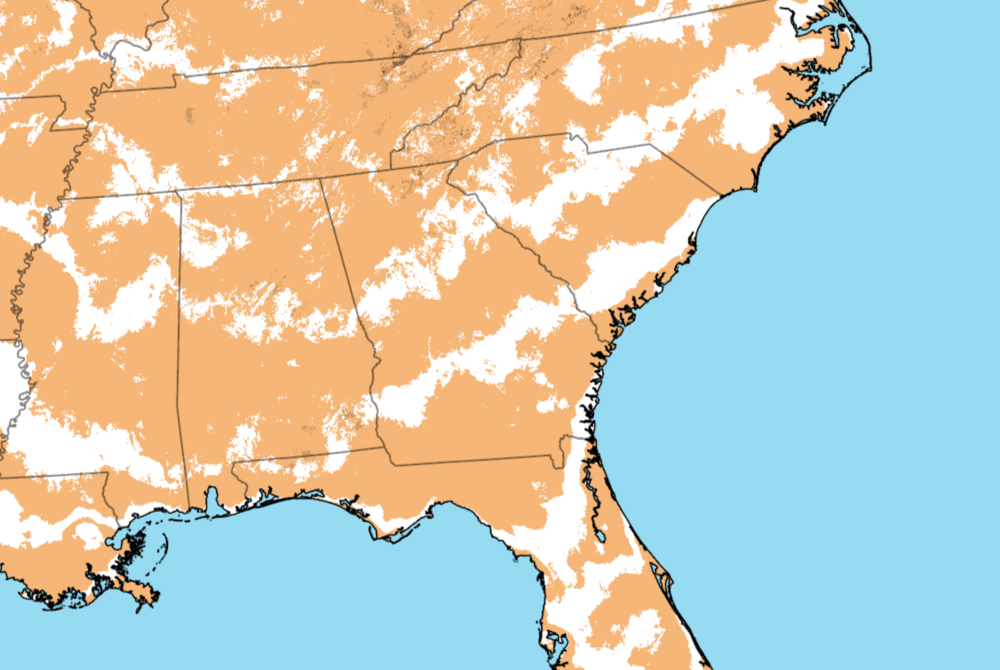
Caption
The 2023 Plant Hardiness Zone Map shows shifting zones in much of Georgia. Areas in orange and brown saw a warming of their average lowest winter temperature range, compared to 2012. White denotes no change.
Credit: U.S. Department of Agriculture

